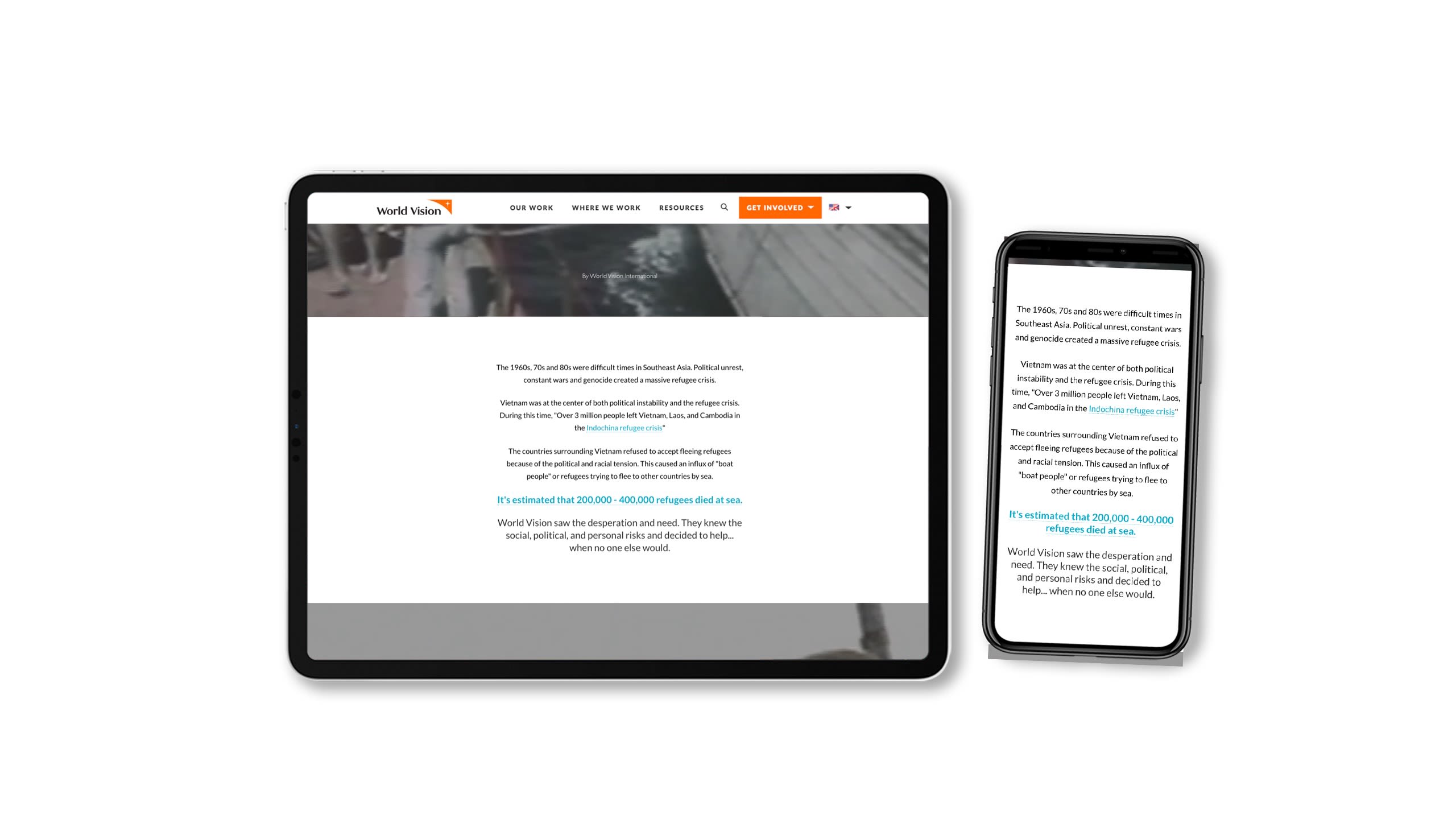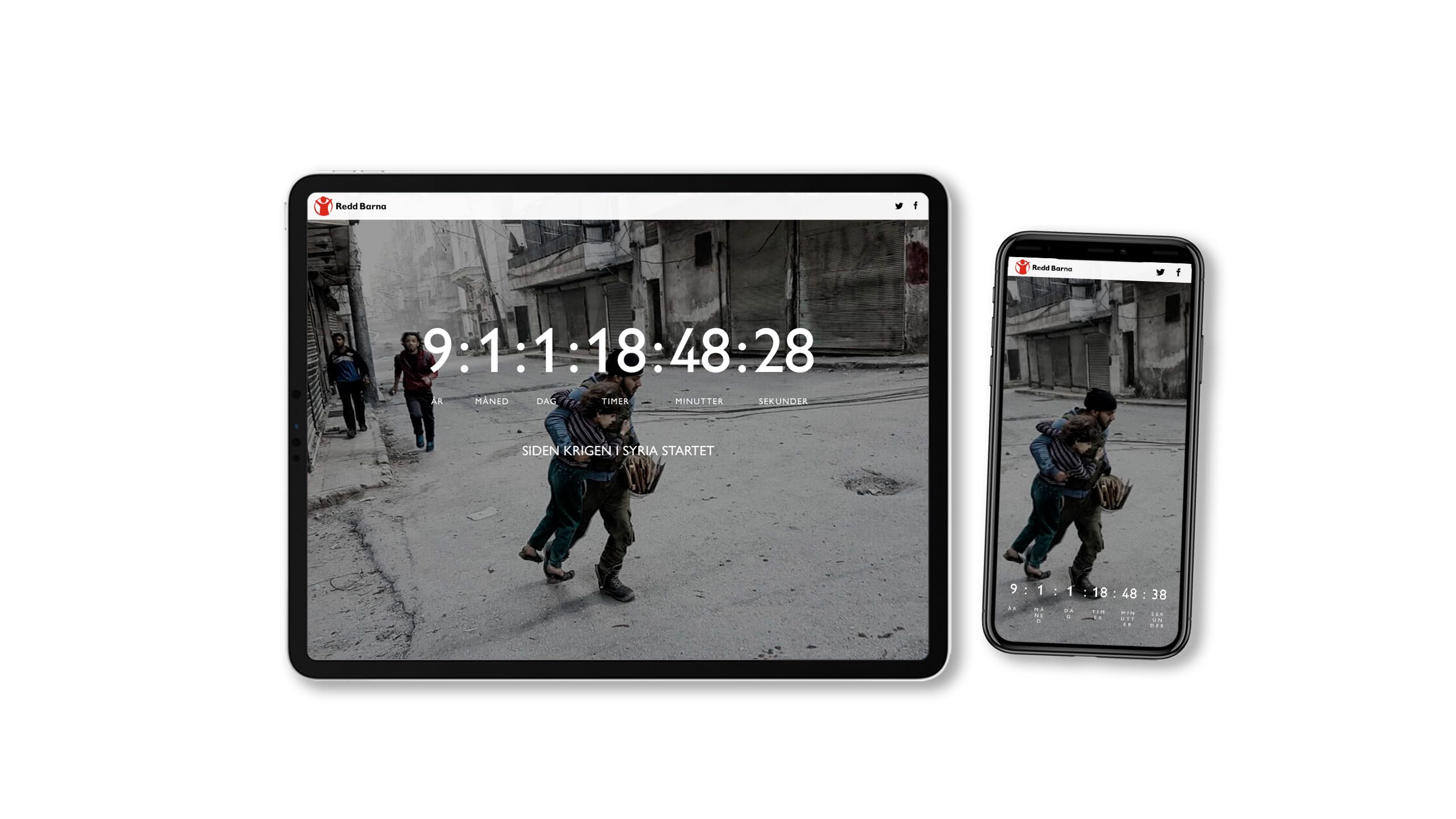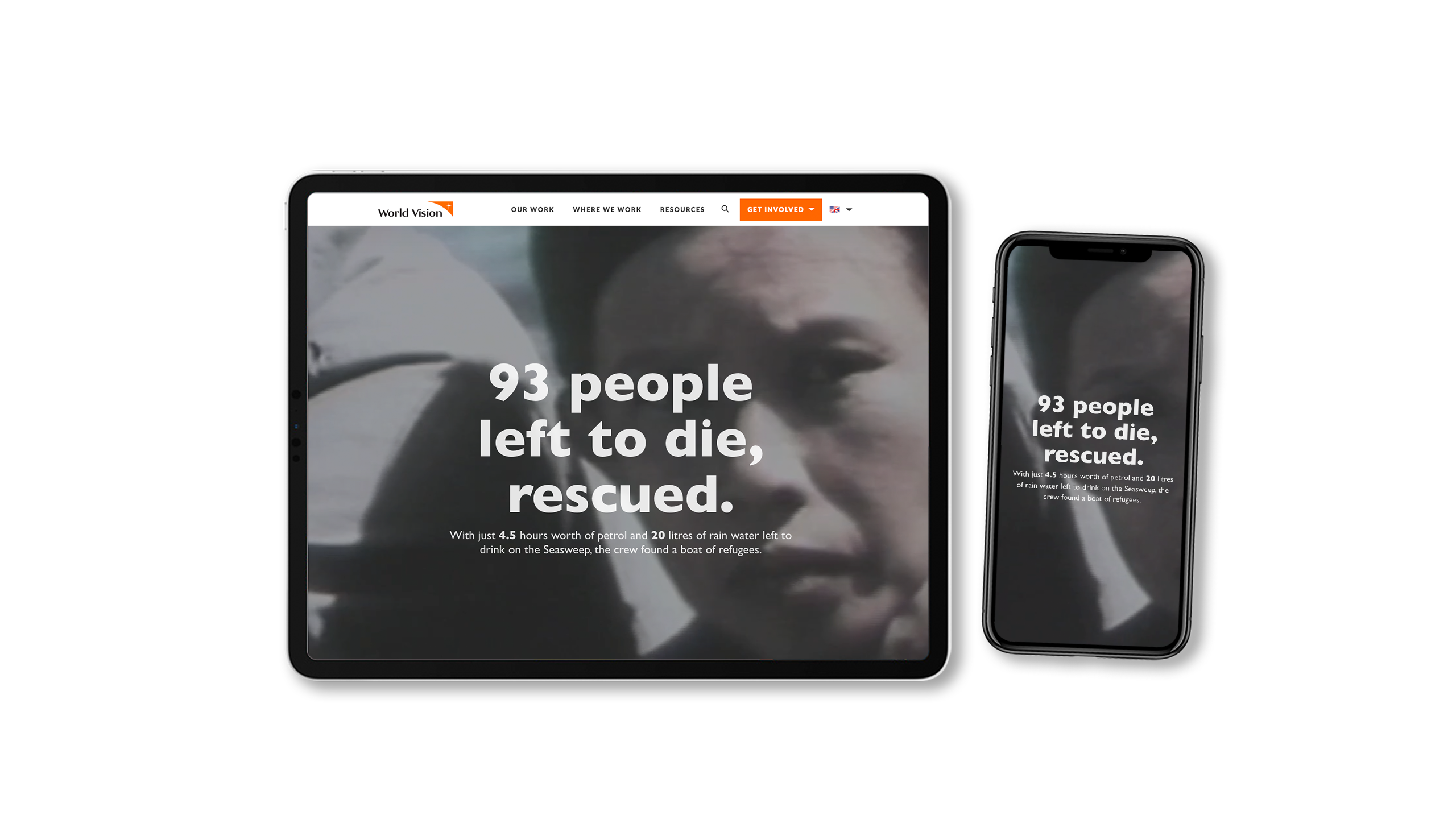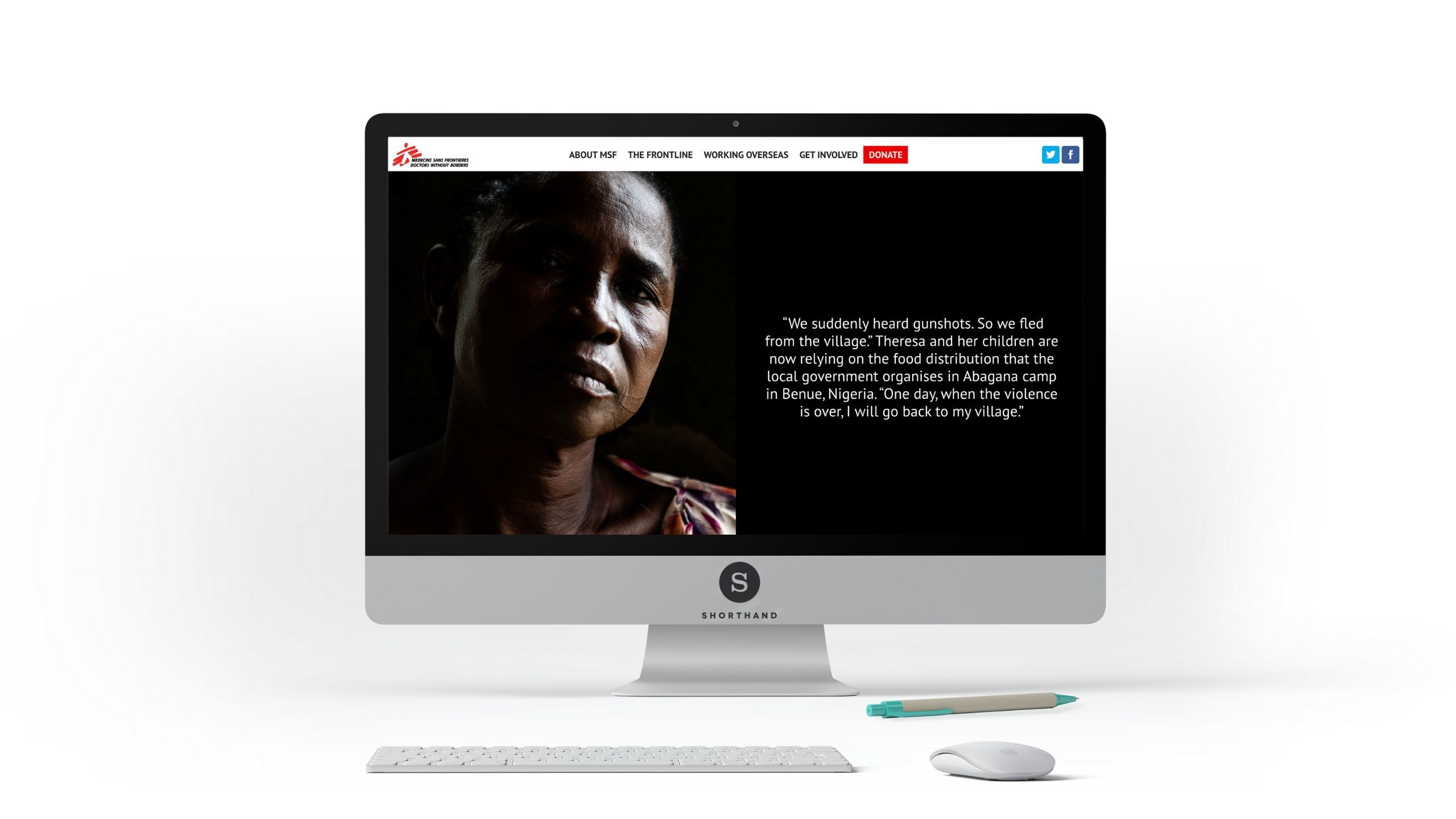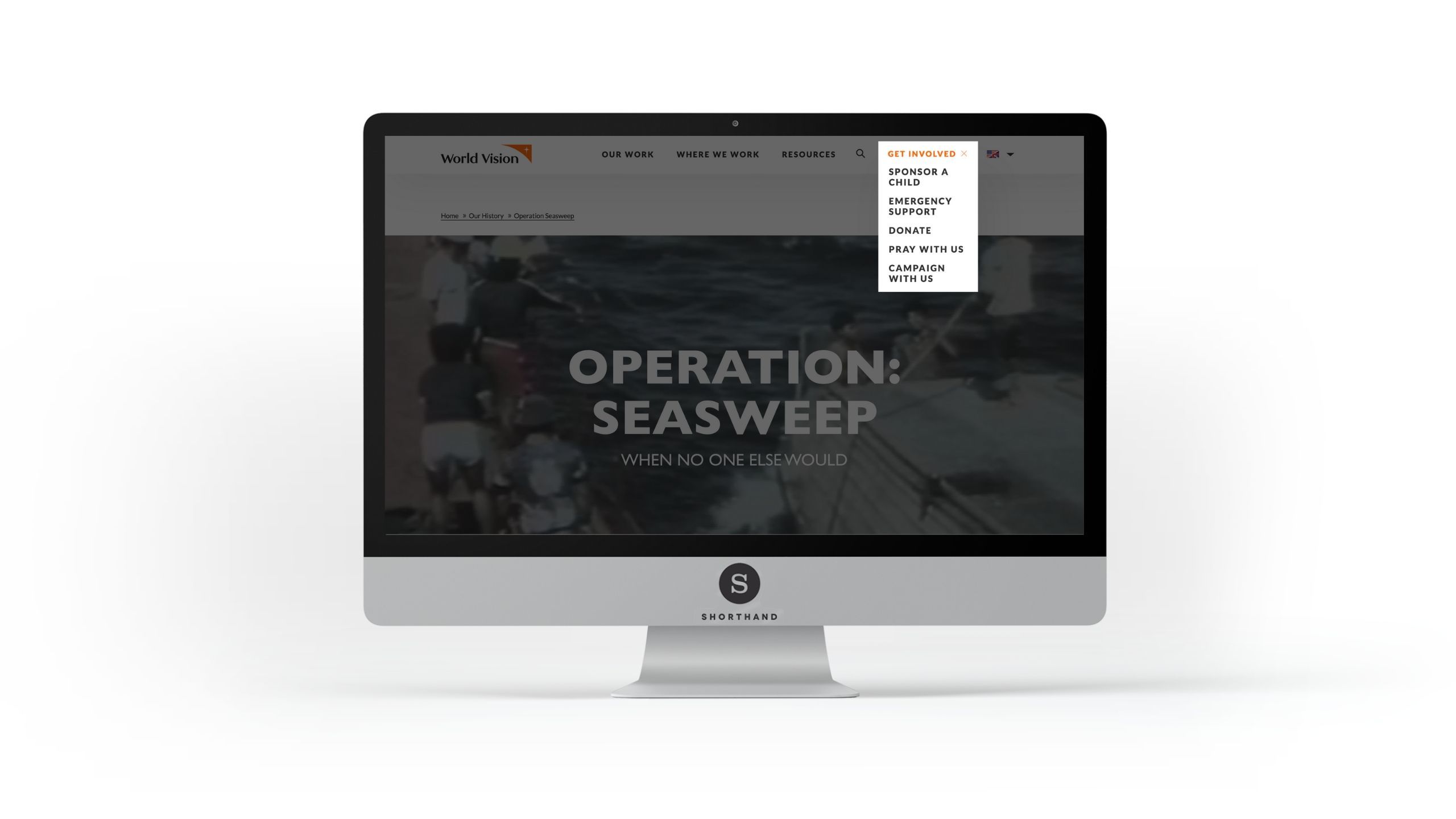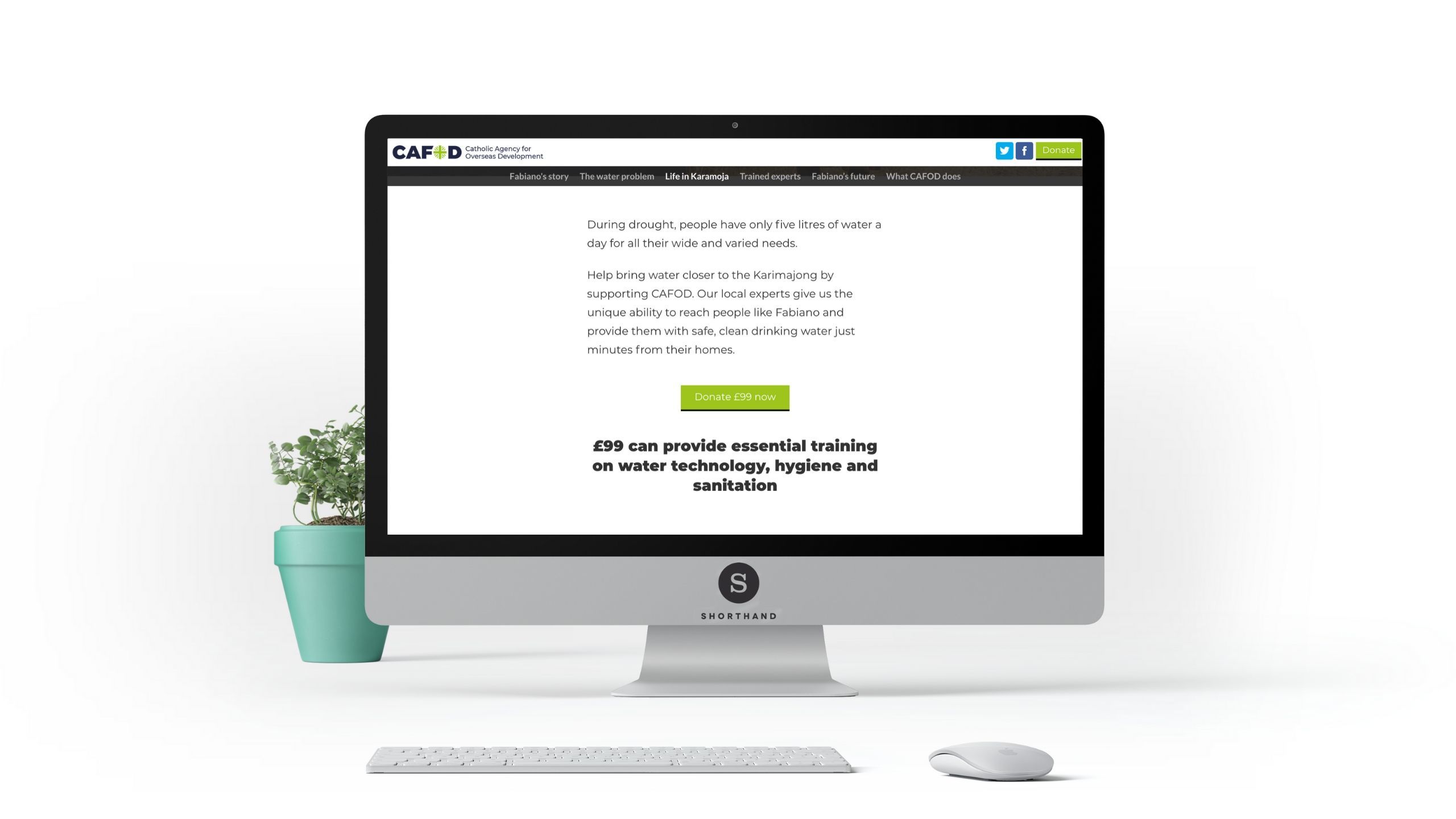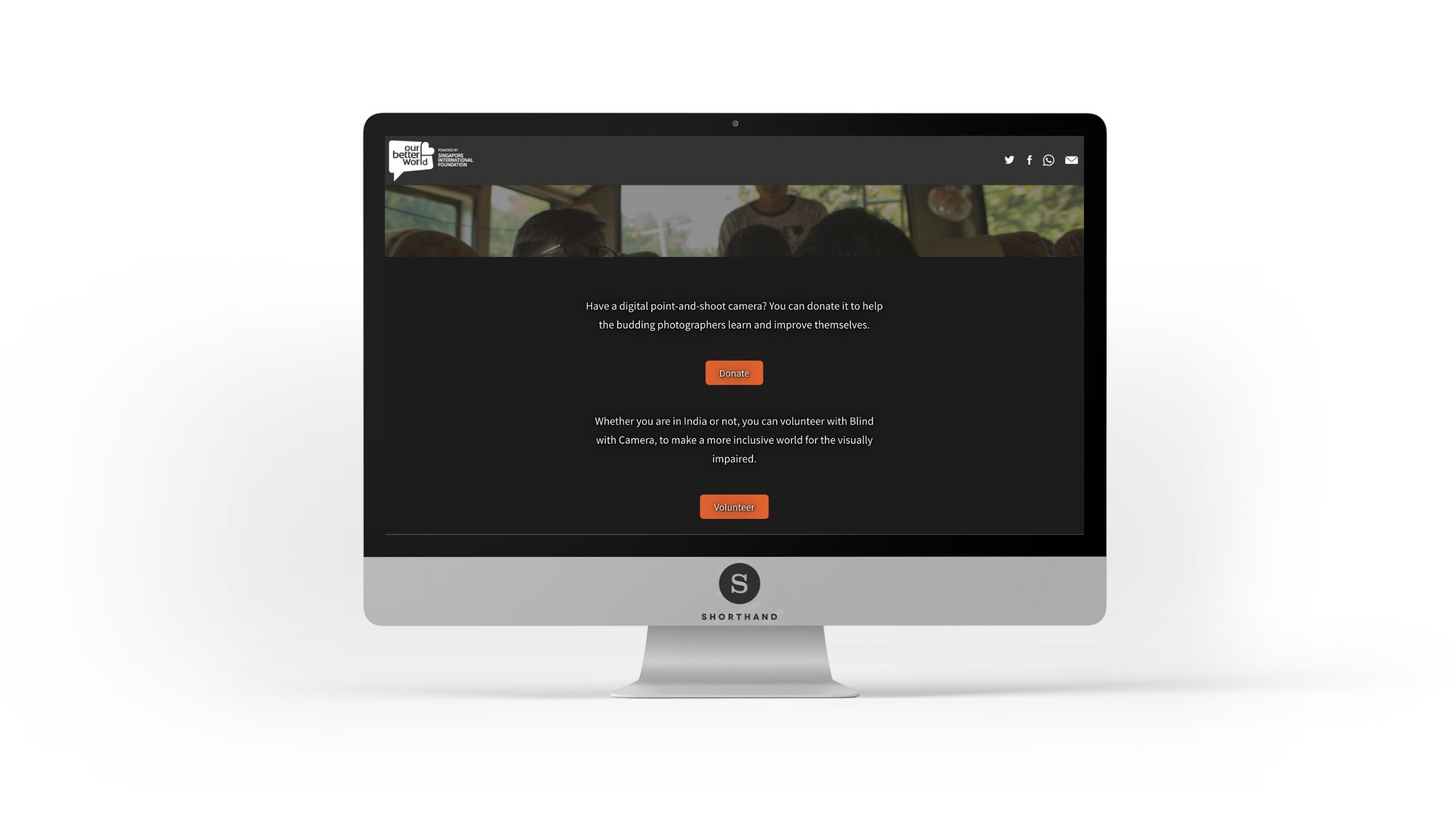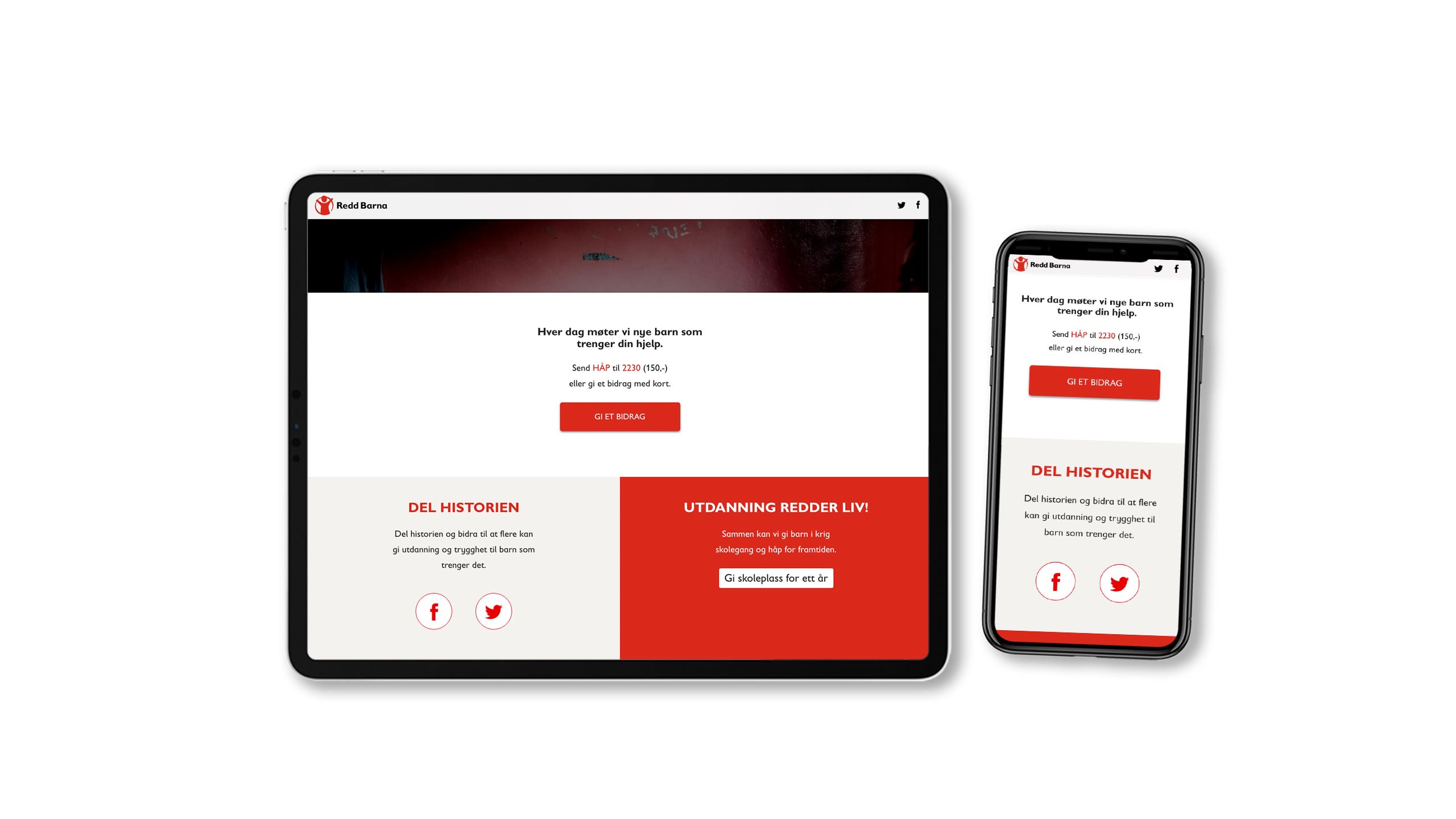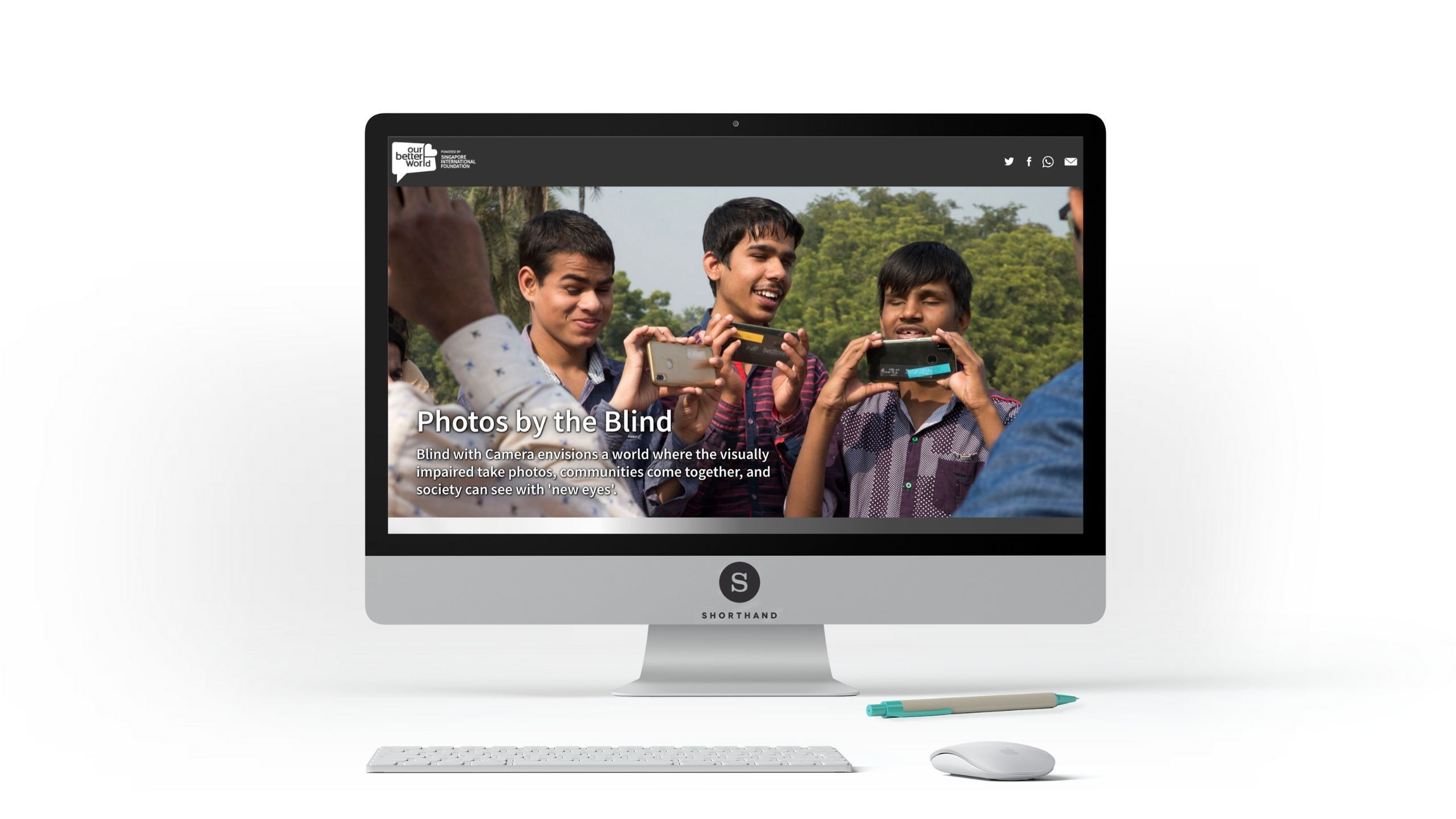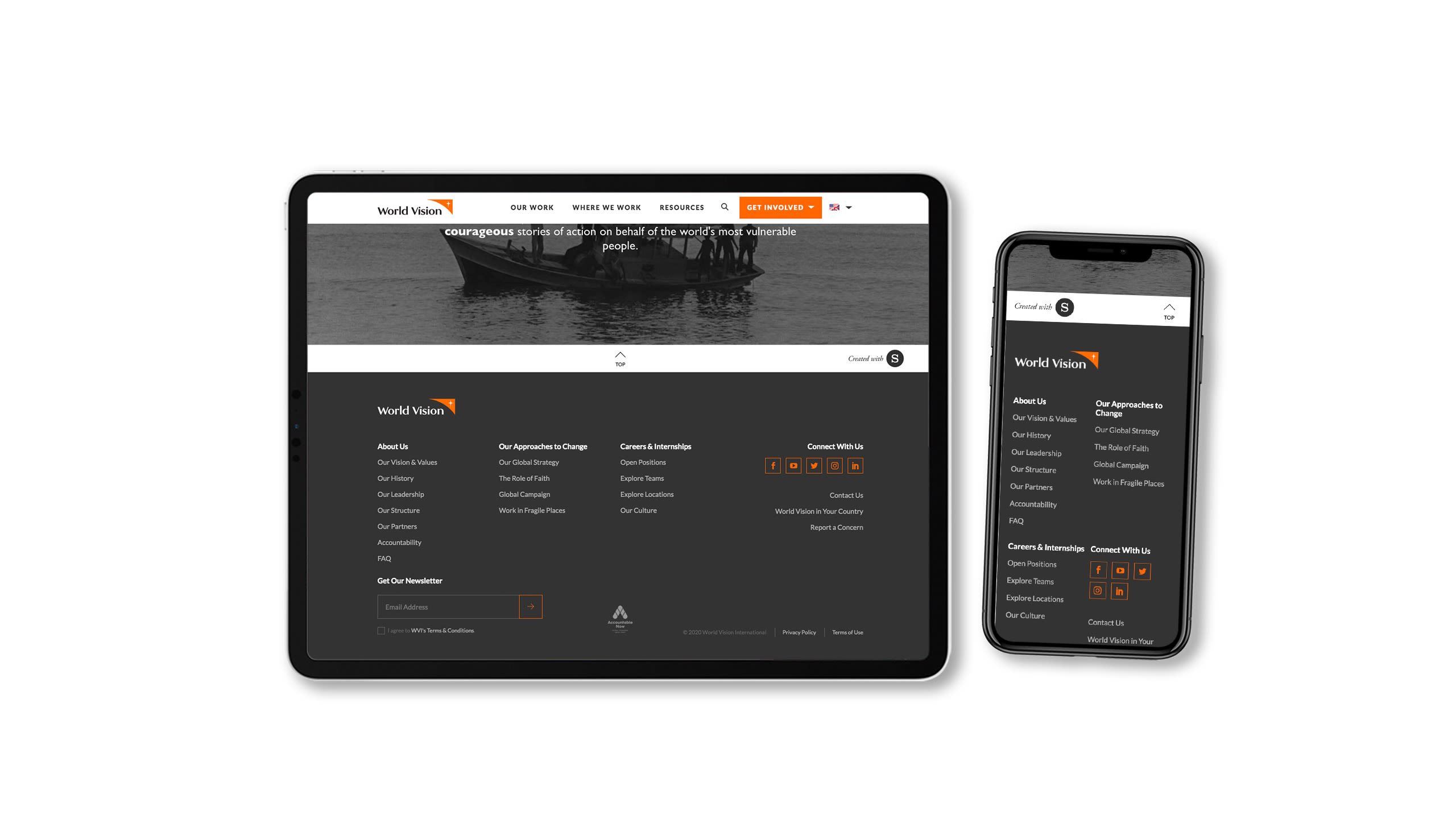7 tips to compel action in nonprofit campaigns

Nonprofits and charities tell some of the world’s most important — and often hidden — stories. They expose humanitarian crises, drive relief for natural disasters, and highlight the beauty and fragility of our planet.
by Rachel Bartlett
But as we point out in our Introduction to digital marketing for nonprofits, the marketing teams at nonprofits don’t just want attention. They want action.
To drive action on their most critical issues, the world’s leading nonprofits, such as MSF and World Vision, have embraced a new generation of digital storytelling platforms. These platforms allow nonprofits to share longform, visually arresting narratives, and get results.
This is why longform content has become such a critical part of the content strategy for leading nonprofits.
In this guide, we'll show you how they use platforms like Shorthand to increase engagement and inspire change in the world — and how you can, too.
Tips include:
What do the BBC, Tripadvisor, and Penguin have in common?
They craft stunning, interactive web content with Shorthand. And so can you! Create your first story for free — no code or web design skills required.
Sign up now.
1. Invite the reader to scroll

To convince a reader to take action in support of your work — for example, by donating money or signing a petition — you’ll need to make them scroll.
To make them scroll, the first thing you'll need to do is spend time focusing on the content ‘above the fold’ — that is, the content a reader first sees after clicking on your story. For nonprofits, a good approach here is to use emotive images and copy to emphasise the urgency of your appeal.
Another technique is to emphasise statistics to frame the size and scope of an issue. In revisiting Operation: Seasweep, World Vision uses succinct but powerful introductory text to put a spotlight on the victims of the Indochina refugee crisis.
2. Emphasise critical information

Go big on the facts that matter most.
You can use fact boxes and infographics to emphasise the most surprising or shocking details of your story. This will separate key facts from peripheral details, and ensure that they stay with your reader.
For a powerful and user-driven way to animate bitesize content, consider combining sequences of still graphics with layering effects. This is simple to do with Shorthand's Scrollmation feature. Simply upload a series of images that you'd like the reader to step through via scrolling — effectively creating a flipbook-style animation.
A great example of Scrollmation is from CAFOD's story, A journey in the dark. The CAFOD team used Scrollmation to highlight three key statistics as the reader scrolls through the corresponding narrative.
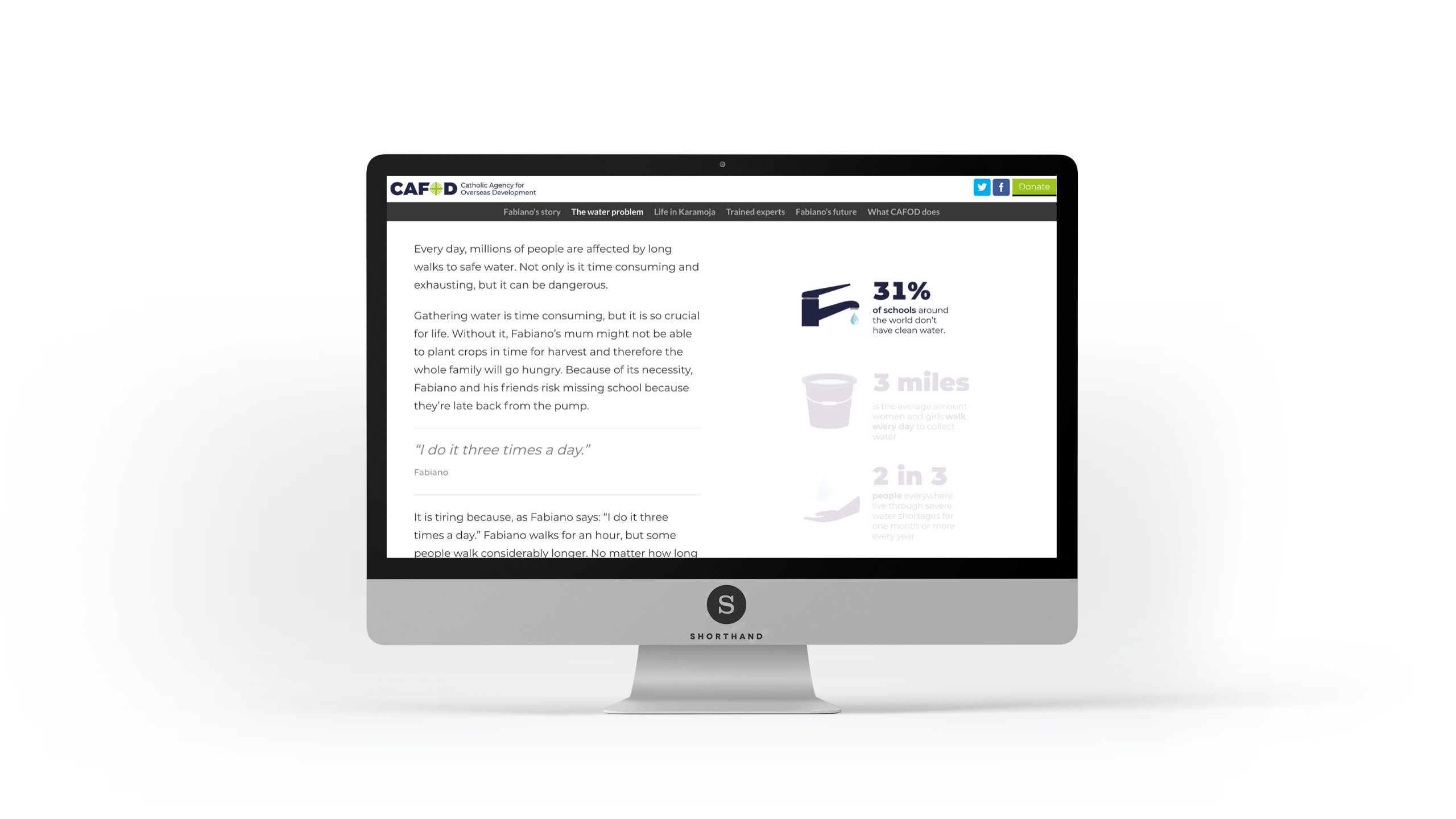
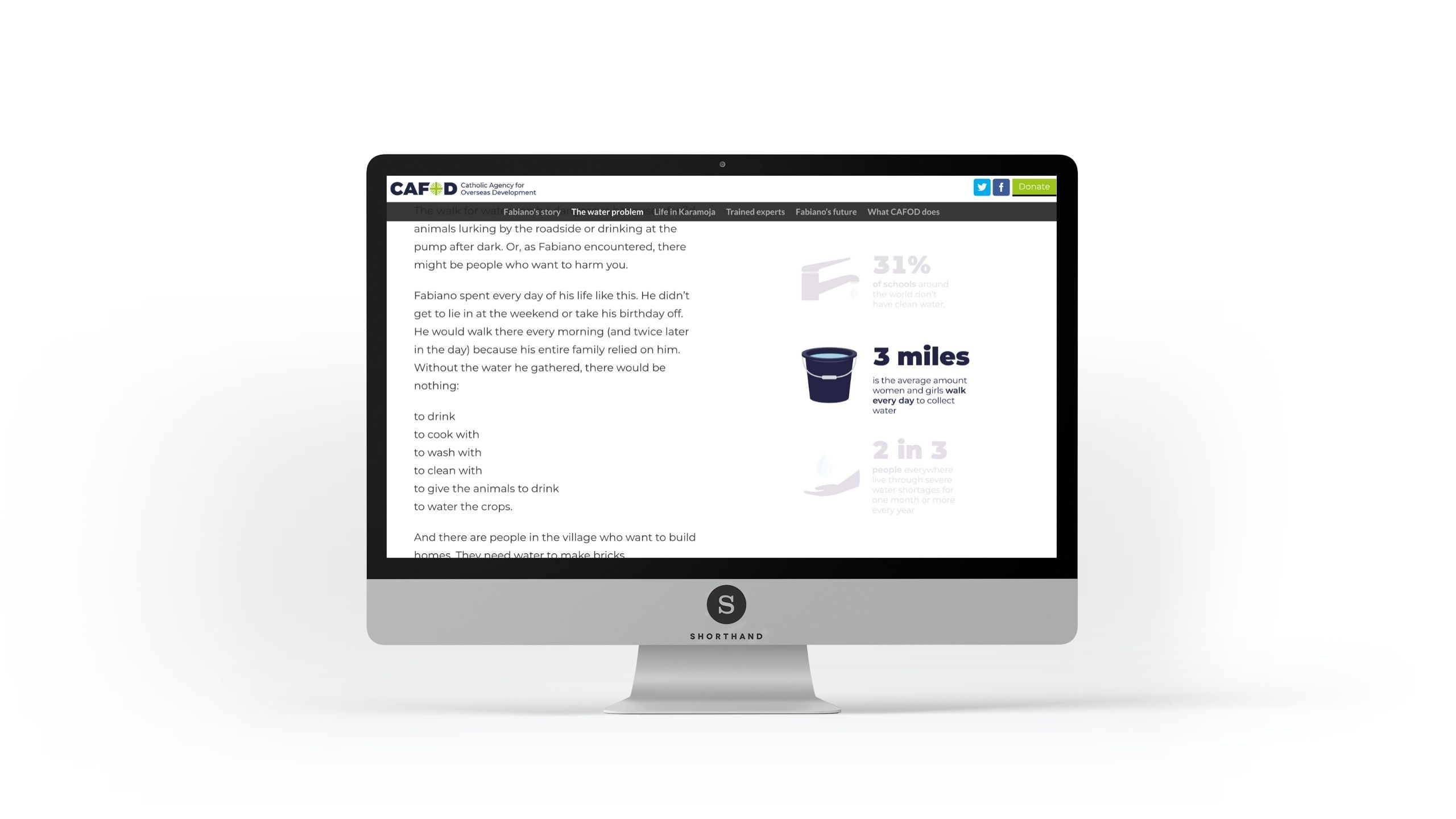
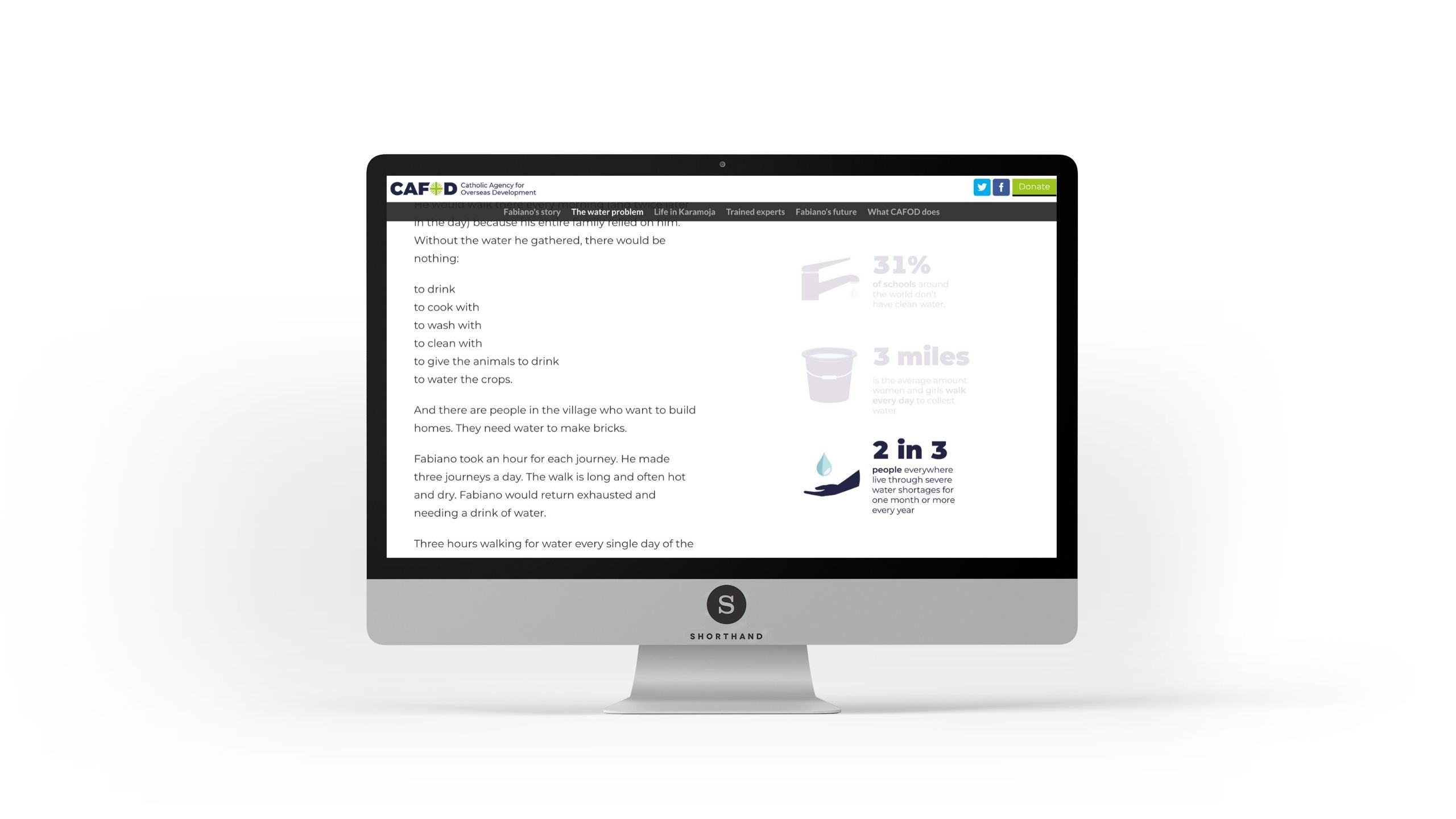
When covering issues that are far removed from readers' everyday experience, the best nonprofit marketing teams deliver clear geographical context — this is vital in making stories understandable and relatable.
Shorthand's Reveal feature is frequently used to add transitions to maps and aerial photographs to give a sense of physical space and place. While web developers can give geographic context with interactive maps, Reveal makes this type of animation and interactivity readily available to non-developers.
For example, in Visualizing Yemen's Invisible War, The Yemen Peace Project uses Reveal to place overlays onto a map to highlight the presence and control of different groups across areas of the country.
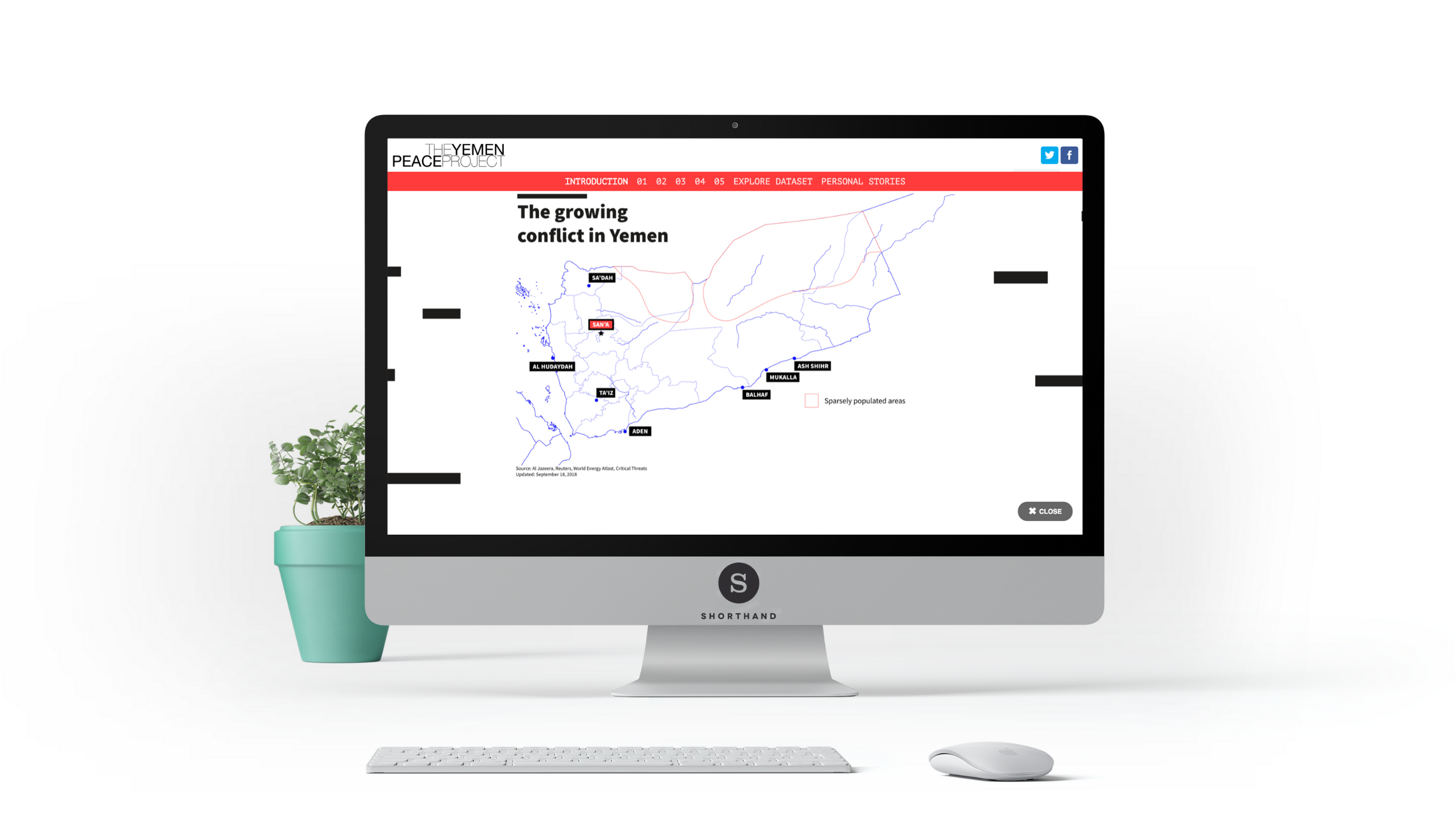
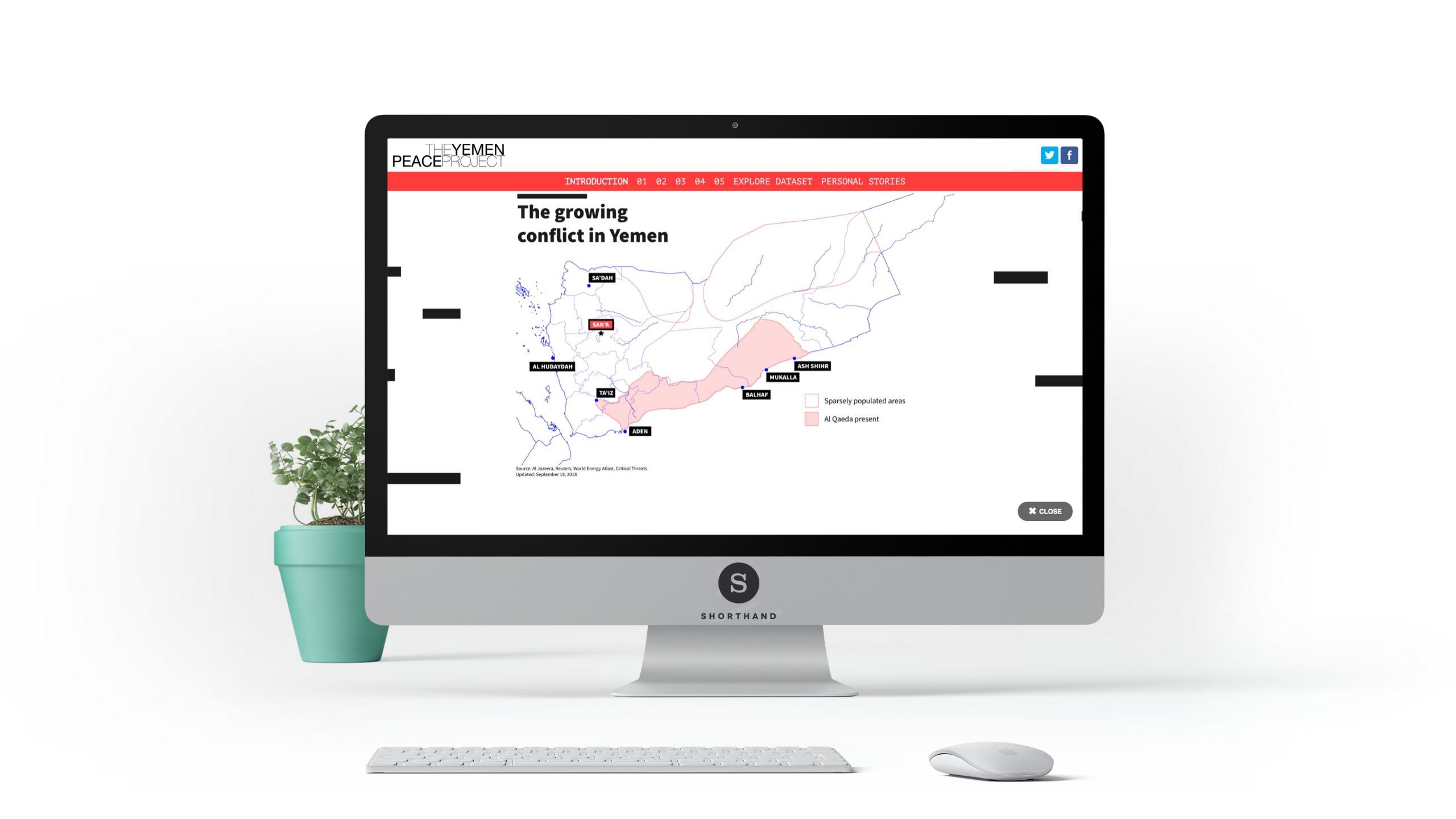
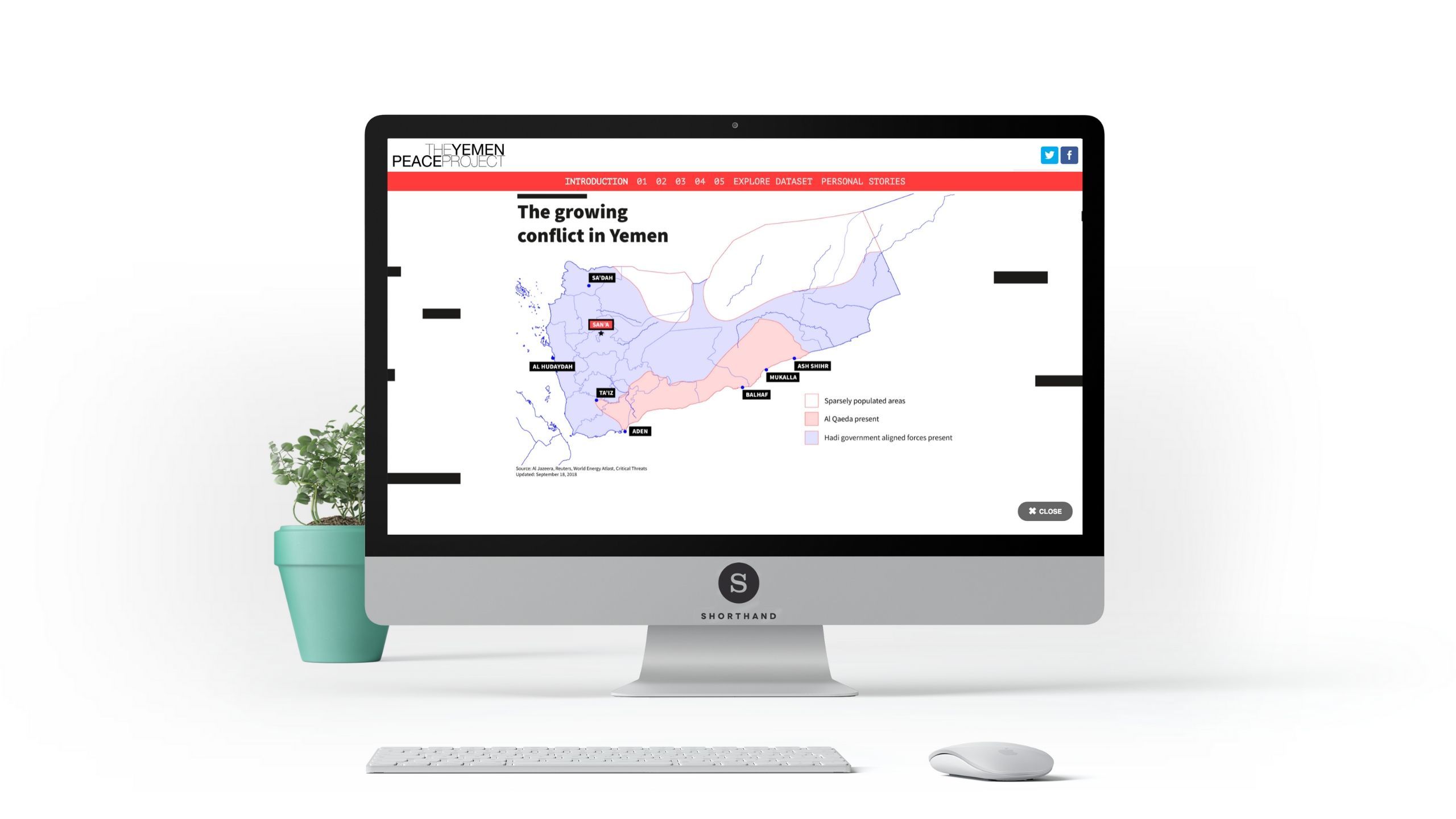
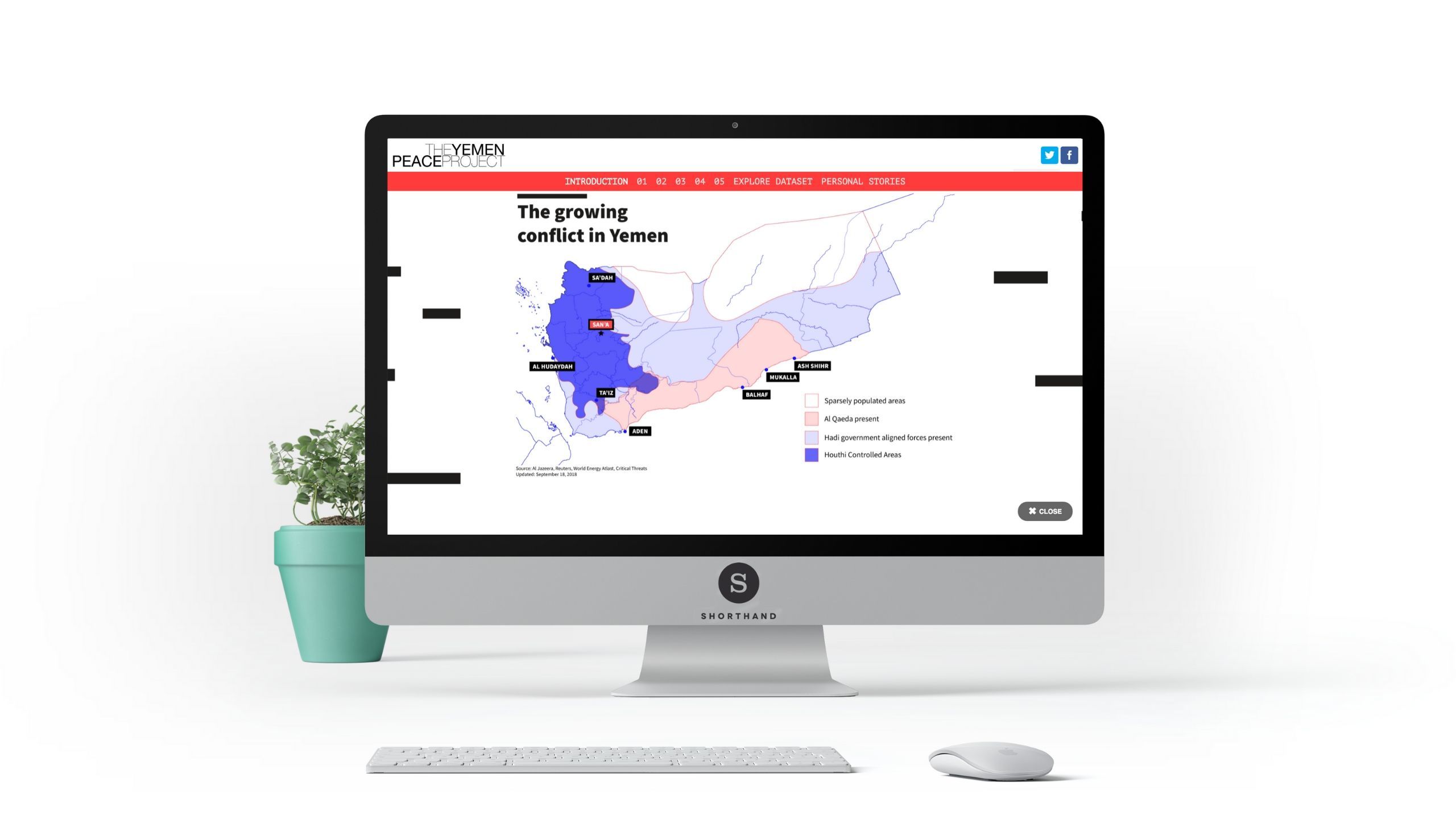
Another example of using layering to deliver context is historical comparisons. Having a clearer understanding of changes over time can help your reader appreciate the need to act now.
The Yemen Peace Project's story uses Reveal not only to present map overlays, but also to show contrast between historical and more recent satellite images — vividly highlighting the damage caused to the land below.
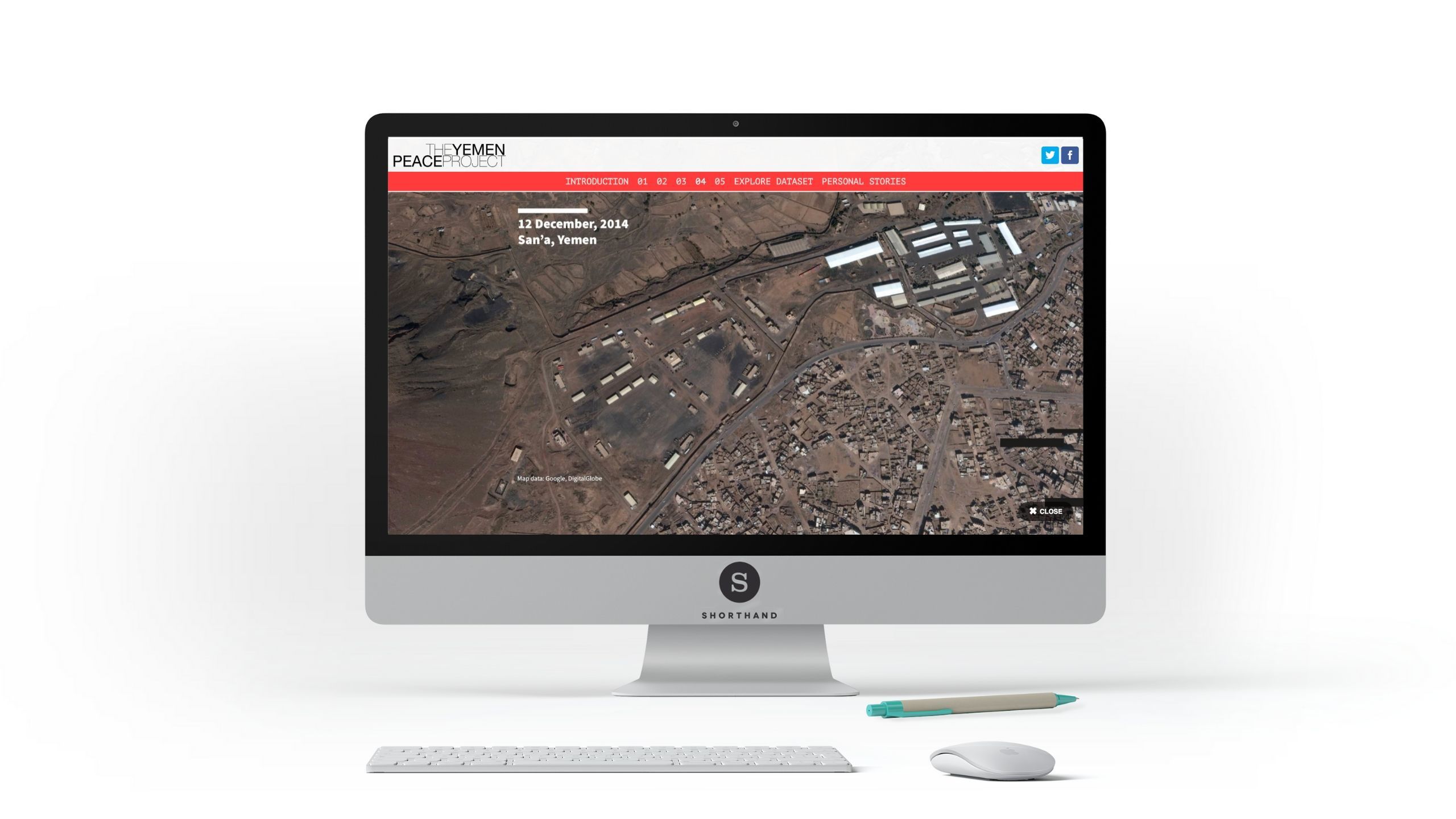
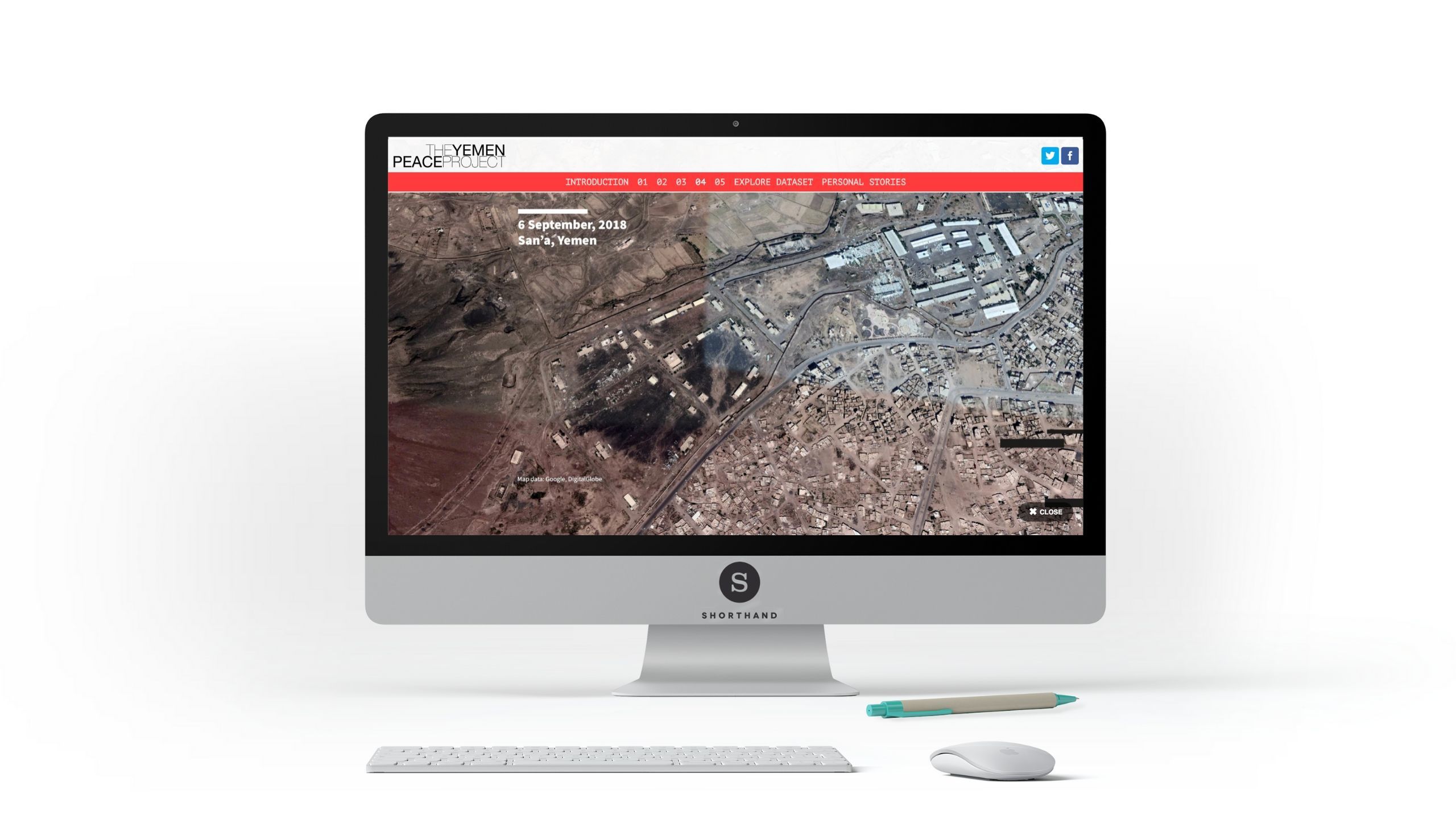
Big businesses and nonprofits alike use Shorthand.
And so can you, with no code or web design training.
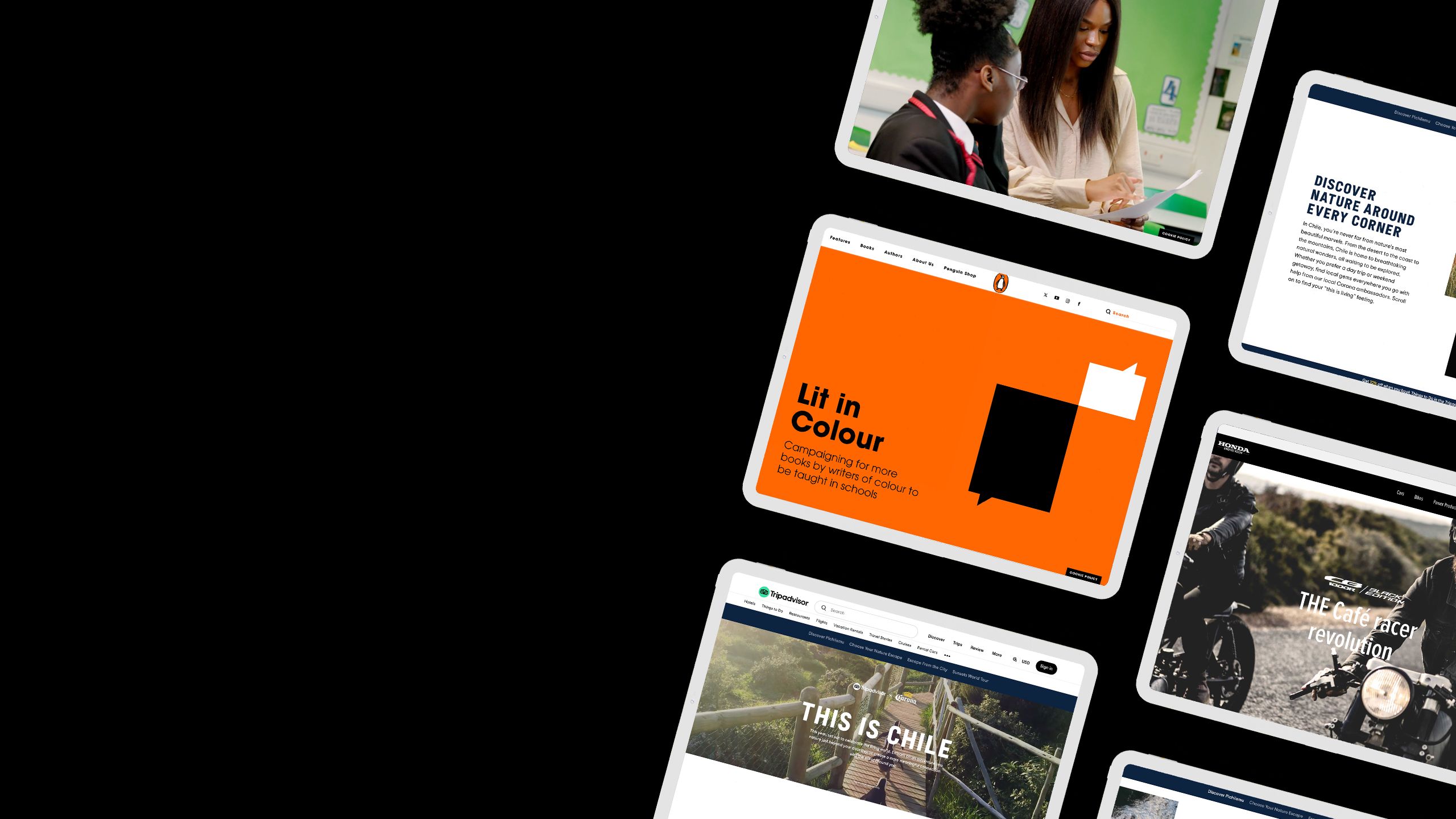
If time is critical to your story, make it known — loud and clear.
Redd Barna (Save The Children Norway) delivers a stunning countdown in Et Liv I Krig (A Life Of War) to highlight how long it has been since war broke out in Syria. Timeline articles are another engaging and interactive option.
3. Stun with statistics

Scroll-based narratives offer a powerful way to unravel complex statistics through eye-catching interactive data and animations.
By shining a spotlight on key statistics or using data storytelling, you can encourage your reader to pause at critical points in the narrative without distraction — as in the example below by World Vision.
Similarly, A journey in the dark presents full-screen photography overlaid with bold statistics revealed through scrolling.
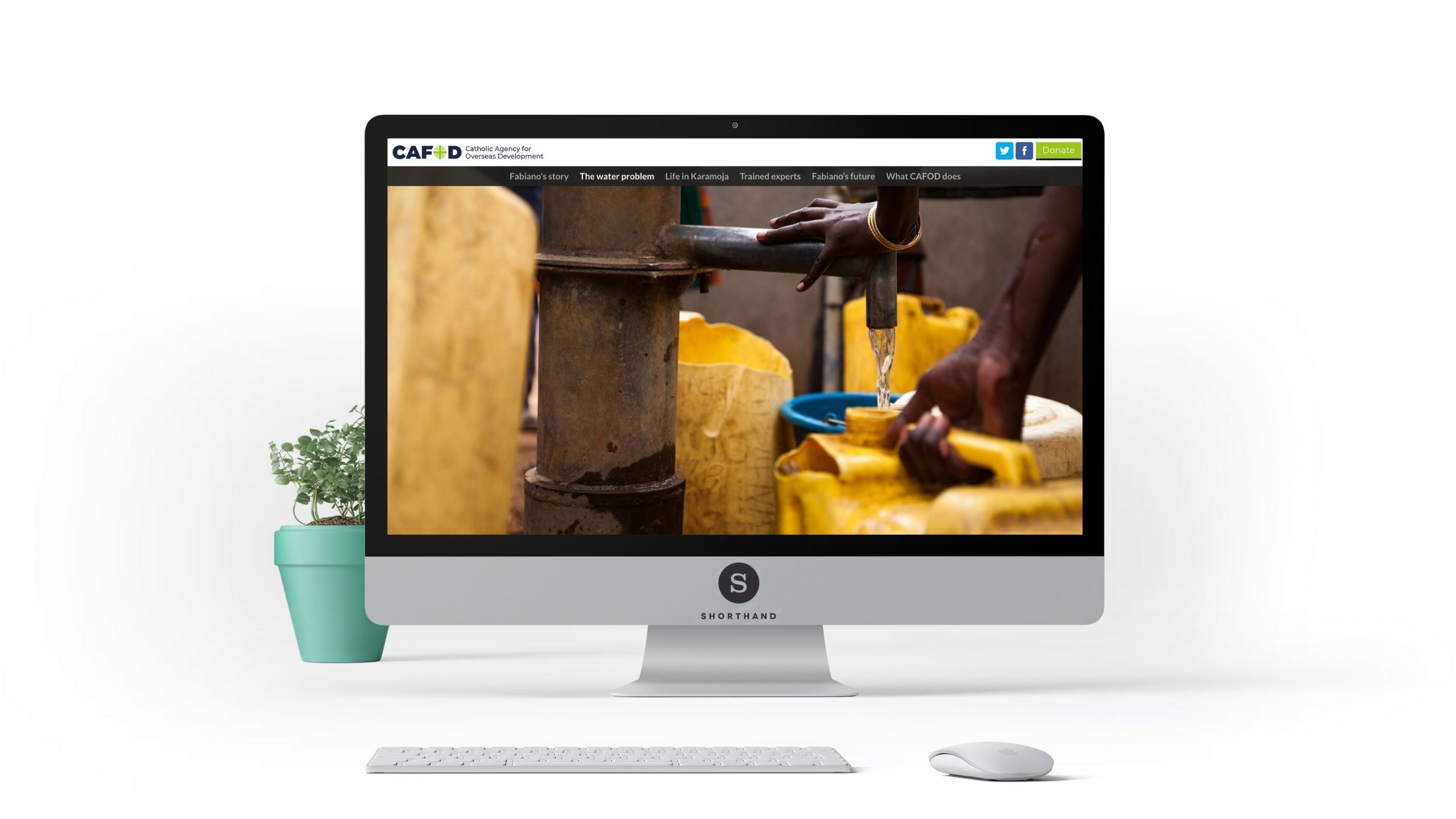
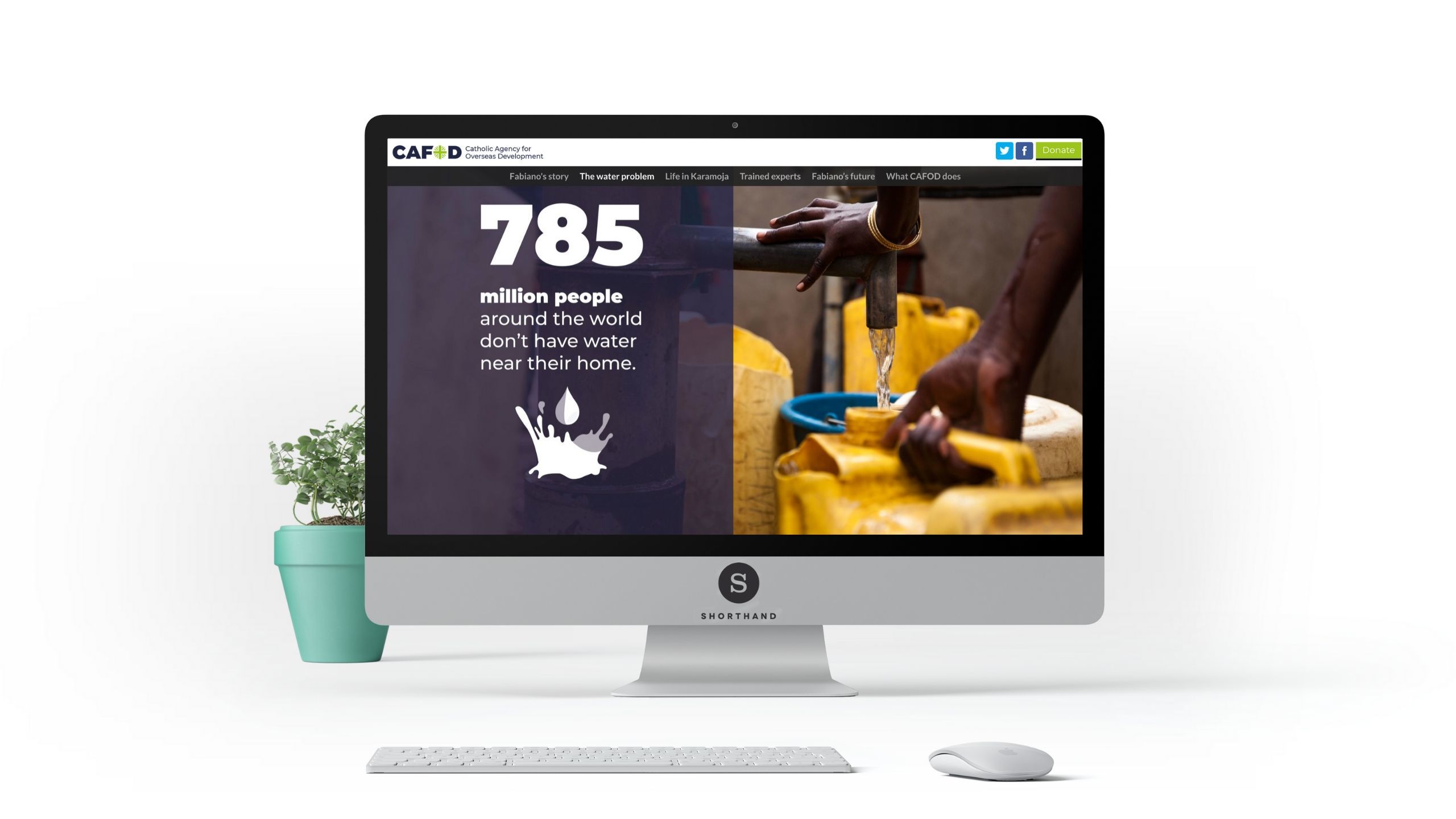
There are many web tools available to help with creating beautiful charts and graphs to use in visual storytelling — for example, Tableau and Datawrapper. The Yemen Peace Project's report makes use of Tableau visualisations for added data-driven impact, effectively making an interactive infographic.
4. Get personal

Make an issue hit home by finding a personal angle. This can be as straightforward as taking a human slant on a story typically focused on numbers, or applying a more humanised brand voice across your comms.
Powerful photography makes the personal angle harder to ignore. In MSF's report on Nigeria — On the run from violence — first-person accounts are coupled with compelling visuals.
If a story tackles an issue far from home, it might be difficult for readers to appreciate the full scale or intensity, so consider ways to draw visually-powerful comparisons or illustrate the reality.
You can also use Shorthand’s Reveal or Scrollmation features to apply layers as the reader scrolls. This makes the comparison visually, similar to the map examples seen earlier.
5. Signpost calls to action

Once your reader feels compelled to get involved, make the opportunity to do so easy and obvious.
This could involve a range of actions, including:
- donation or sponsorship
- newsletter sign-ups
- volunteer sign-ups
- signing a petition
- downloading resources, or
- emailing political representatives.
Consider whether it’s best to wait until the end to deliver your call(s) to action, or if there are pockets of opportunity earlier in your narrative that don't overtly interrupt the flow.
Many organisations also place a call to action in the header of their stories, to remain in view at all times. This can be configured to appear across all your stories as part of our custom theme service.
Alternatively, you can embed your Shorthand story within any existing Content Management System, so it sits under your usual top menu and calls to action.
World Vision, for example, offer a dropdown menu of options to convert readers into active supporters.
Some stories also feature donation buttons throughout the narrative, where appropriate. This not only gives the reader multiple prompts, but enables them to convert from a reader to a donor in the moment.
In A journey in the dark, CAFOD makes those donation requests specific and detailed, with the impact made concrete through reference to real-world outcomes. This helps the reader visualise how every penny will be used, and takes away the deliberation over how much to donate.
Of course, powerful action extends far wider than monetary donations.
Embedded forms can be used to create ‘contact us’ fields, sign-up pages for volunteering, surveys to fuel research, or a place to register interest in an event.
Rather than an embedded form, Our Better World uses a button to deliver a simple invitation to its readers to volunteer with the Blind with Camera initiative. The button takes the reader to a page on Our Better World's website offering more details.
A button is also used by Our Better World to deliver a donation prompt. This can be created very easily in Shorthand using our button tool, and then simply linked either to your existing donation page on your website, or to a third-party fundraising platform.
You may alternatively have access to a donation widget which can be embedded directly into your Shorthand story via our HTML embed feature.
Whichever approach you take, keep in mind the fluidity of the user experience. You want as few obstacles as possible between the reader deciding to act and submitting their details.
6. Get sharing savvy

A simple action every reader can take to help further your cause is to share your story.
Effectively integrating sharing tools, and providing clear signposts, is a vital ingredient in developing an engaged audience.
You can use inline HTML to place sharing buttons around targeted content within the narrative — to invite the reader to share a specific quote, for example. Alternatively, you can dedicate your final section to making it easy for readers to share the entire page. At the end of Redd Barna's story there are a handful of key calls to action, one of which is to share the story on Facebook and Twitter, with some key messaging and a branded button for each network.
You can also easily enable sharing buttons in the header, which remain in view as your reader scrolls. Shorthand integrates Facebook and Twitter out of the box, but you can build in other networks as required, as well as other ways of sharing, such as WhatsApp or email, as seen in Our Better World's header below.
You can also utilise tools like ShareThis to embed a menu of share icons to hover over the page as your reader scrolls.
However you build sharing into your story, give thought to which social media platforms are best aligned with your goals, and the actions you want to provoke.
Ensure any pre-set share text contains relevant keywords and hashtags, as well as a graphic optimised for the specific platform.
7. Make contact crystal clear

If your reader is keen to help, they may have questions they wish to get answered first. You'll need to make sure it's easy for them them to get in touch.
This might be via a footer included in all your stories, similar to the one used by World Vision.
Alternatively, embed a contact form allowing your reader to submit their details along with a message.

For more ideas on promoting your cause read our article on nonprofit campaigns, check out these inspiring donor impact report examples.

